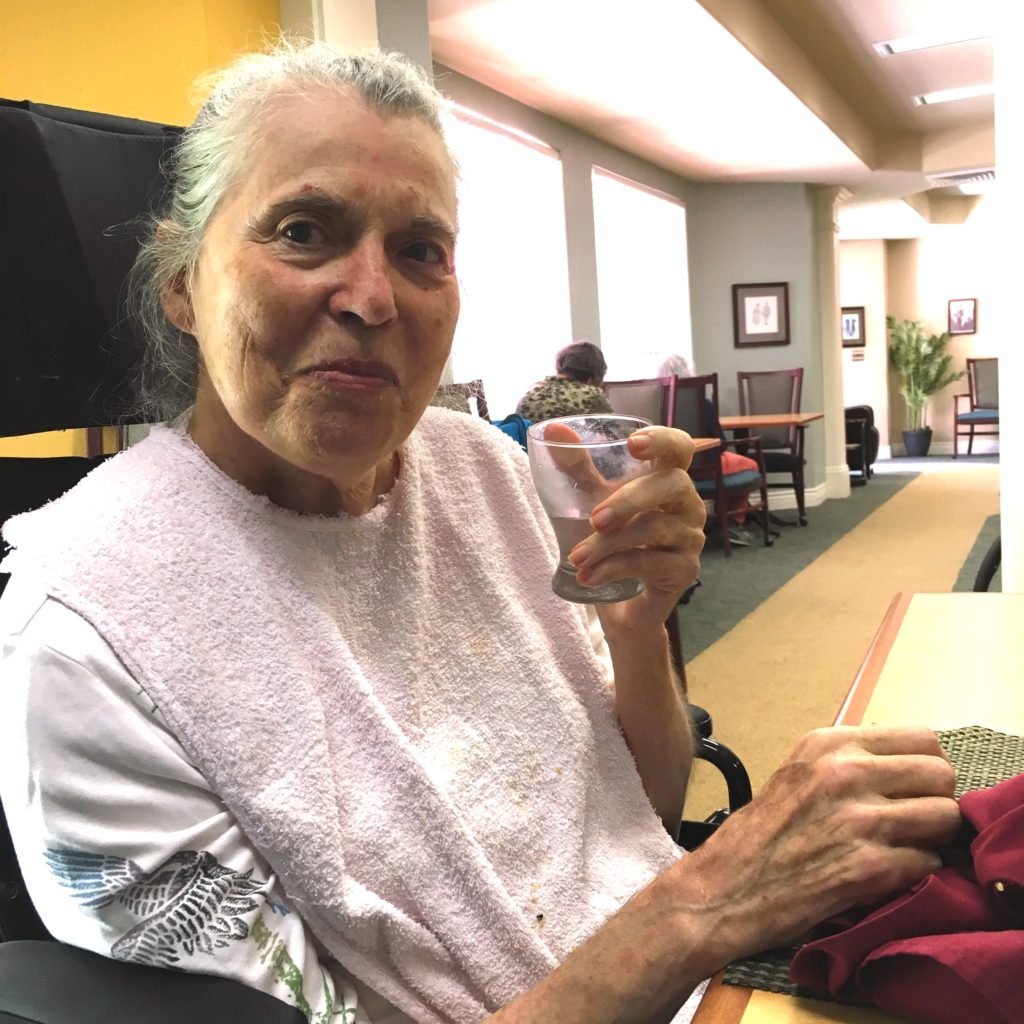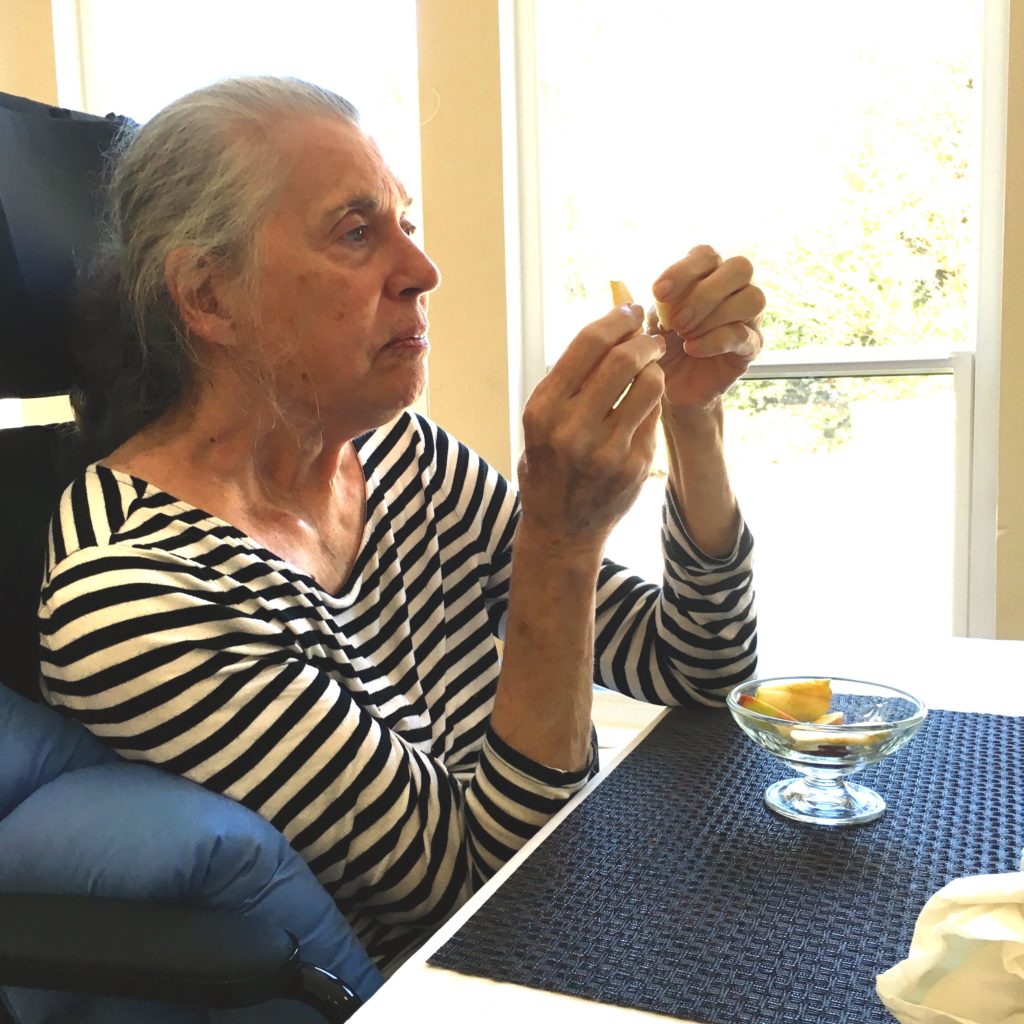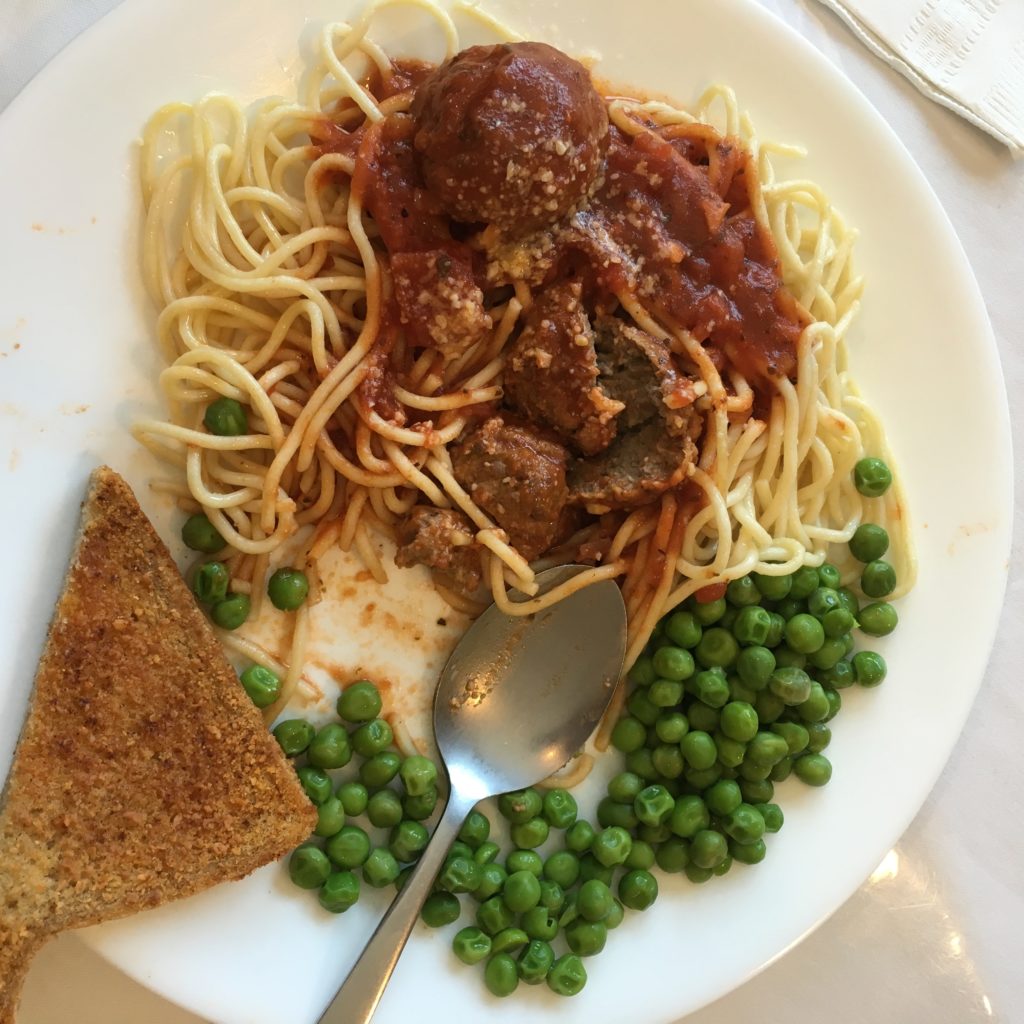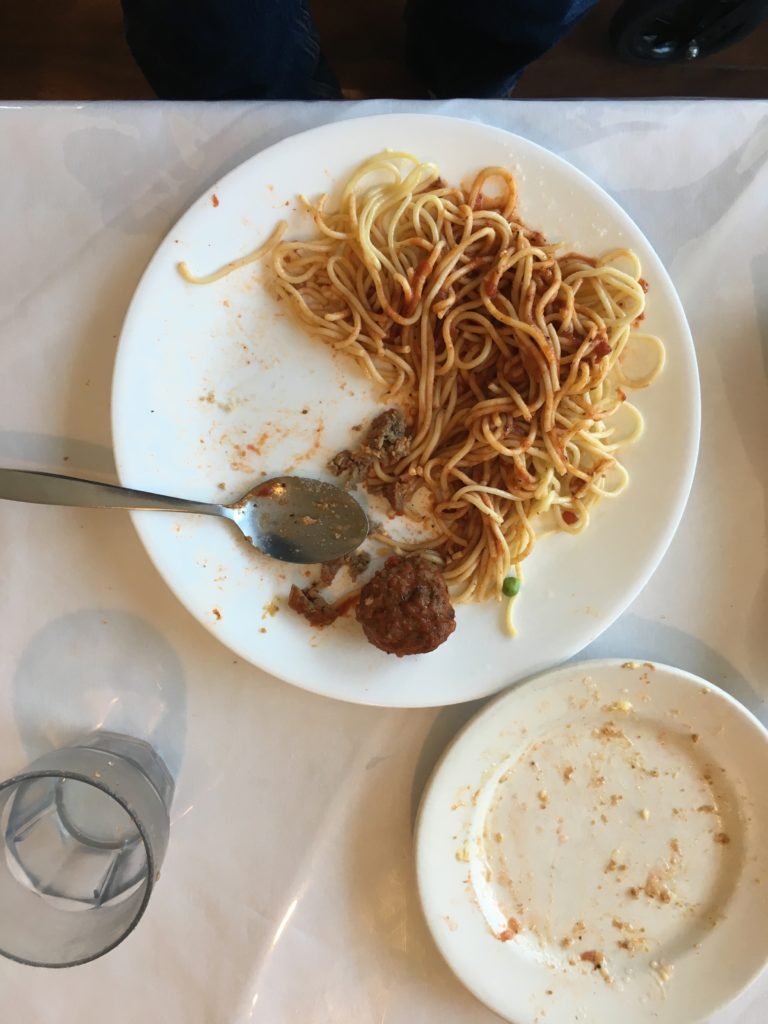As I learned more about the trial and error adjustments she made while visiting Leslie, I came to regard Lisa not only as a kind and loving daughter but also as an extremely imaginative and effective care-giver. That regard persists to this day, but at some point I noticed that her expert care giving frequently benefitted from her mom’s contributions as a “co-experimenter.” It took a while for me to absorb the significance of what I was seeing, but eventually I got it. By engaging her mom in a kind of collaborative trial and error, Lisa and Leslie generated insights, skills and good times together in a way that neither could have done on her own.
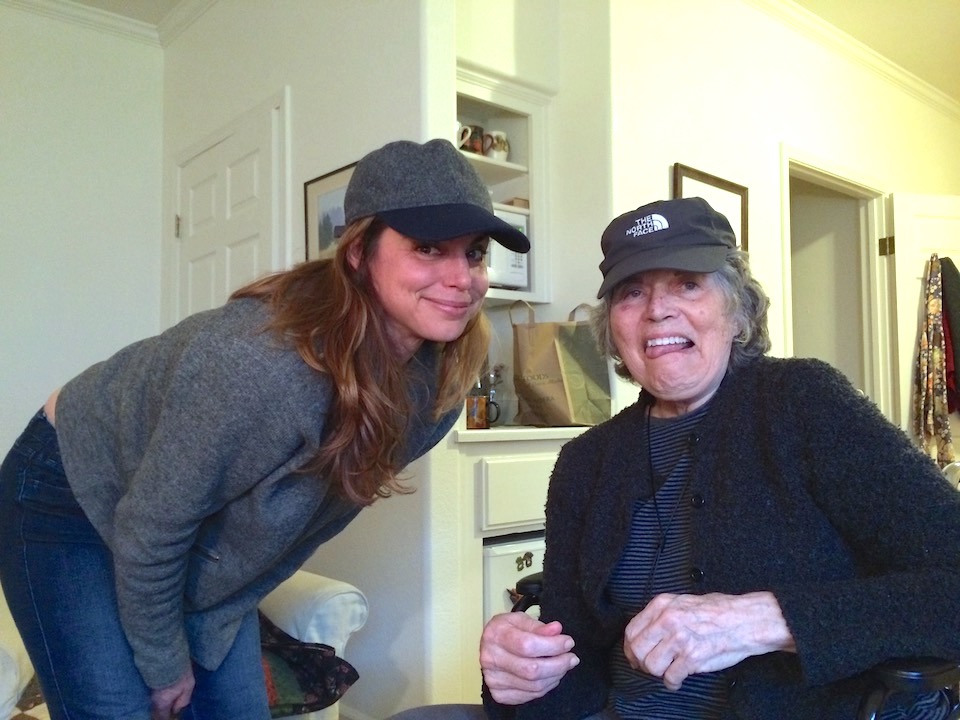
Lisa and Leslie in a playful mood while posing for a photo I took of them wearing hats. The back and forth involved in taking multiple photos to get one that is agreeable to both parties is a good illustration of collaborative trial and error. Lisa was adept at applying the same principle to engage her mom and other memory care residents in a wide range of activities.
What Lisa was doing with Leslie struck me as yet another level of her care-giving expertise, and Leslie’s contributions suggested that at least some of her considerable social skills were surviving the course of her Alzheimer’s. I’d already had that thought about Leslie in light of her responsiveness while interacting with me. But as I learned from Lisa to engage with her mom more collaboratively, Leslie’s ability to reciprocate seemed even more remarkable. Compared to what I’d heard about limitations that plague people living with Alzheimer’s, what I witnessed between Lisa and Leslie seemed at least exceptional, if not unique.
That impression stayed with me for quite awhile, but eventually I noticed Lisa interacting with other memory care residents in the same way she did with Leslie. That fit with my image of Lisa as a expert care-giver. But other memory care residents often responded to Lisa much as Leslie had. What was I to make of that?
My answer came after trying Lisa’s collaborative approach with other residents myself. Lo and behold, I found that most of them had considerable social skills of their own and that some form of collaborative trial and error would frequently bring them into play. As I became more familiar with how resident care givers went about their work, I also noticed that several of them did something similar to what I’d been learning from Lisa and Leslie, and with similar success. I began to realize that Lisa and Leslie were exceptional, but not unique. Some version of what I saw them do together was also possible for other residents and care-givers.
My experience with collaborative trial and error enlarged my understanding of what memory care residents were capable of doing, both individually and collectively. It looked to me as if this kind of exploratory back and forth, for example, could heighten a resident’s sense of agency and stimulate increased interest and sociability. I also noticed that episodes of collaborative trial and error with one resident would sometimes attract others. When care givers welcomed that participation, they were able at times to orchestrate lively rounds of group banter, problem solving or socializing that involved several residents at once–some of whom looked like they were very much enjoying themselves.
Beyond the merits of collaborative trial and error, I took away from what I’d learned from Lisa, Leslie and other residents a sense that HOW people with Alzheimer’s or dementia are engaged by care givers can directly affect the quality of the care they experience. That applies to everything from the quality of their sleep at night, and their interactions with each other, to the food they eat and whether or not they enjoy eating it. Indeed, the dining hall is a prime arena for observing HOW care-givers responsible for feeding and hydrating enlist the participation of residents in eating and drinking. It’s also the setting in which I first noticed Lisa’s ability to engage Leslie in collaborative trial and error.
Two photographs of Leslie during phases of her life with Alzheimer’s when she was able to eat with her own hands and drink more or less on her own. Leslie’s ability to feed herself declined slowly overall, but varied year by year and month to month. Sometimes the assistance she needed changed from one meal to the next.
For some care givers, helping a resident eat involved a combination of cajoling and physical assistance. Their collective task was to feed a diverse group of residents in a limited period of time, and most care-givers focused their own efforts on ensuring that each resident would eat well as quickly as possible. Consistent with that focus, most care-givers held themselves at least partially responsible not only for feeding residents–serving food, monitoring consumption, and offering assistance–but also for motivating them to eat. Under these circumstances, the greatest challenge for care-givers was “trying to get everyone to eat.”
Lisa certainly wanted her mom to eat well and experienced some of the same time pressures as resident care givers. As a daughter visiting her mom during mealtime, however, Lisa was much more likely to start from Leslie’s interests than from a priori expectations about how that particular meal should proceed.
“Oh look what we’ve got today,” she might say when a plate of food was put before her mom. “You like some of these things, right? What would you like to start with? Maybe some of these peas? Or maybe. . . All right! You’re already reaching for that chicken leg, so let’s start with that. How about you chew on that a bit and see how it works. If it’s too tough I can cut it up a bit. But here, let me move the plate so you can pick it up and put it down more easily. And let’s see. . . how about we move your juice over here, so it’s out of the way. . .”
And then, as Lisa reaches for the juice and Leslie gently grabs at her wrist: “Oh, I’m being a little too quick with that, I see! So, maybe you’d like a drink first? That’s fine. Here, I’ll help you hold that so you don’t spill. That’s good. Great! Okay, now maybe I can put the juice over here and you can get back to the chicken leg.”
In exchanges like these, Lisa not only exercised the kind of trial and error necessary to assess her mom’s interests and abilities, moment by moment, she also assisted Leslie in conducting trial and error practices of her own.
Every meal required trial and error efforts by Leslie and her care-givers to identify the best way for her to eat each of the different foods on her plate. For this lunchtime meal, she fed herself the toast and most of the peas–the two items easiest to eat by hand and without utensils. I used a spoon to help feed her some of the peas and the spaghetti, sauce and meatballs. On some days she welcomed this kind of assistance, but on others she tried to eat everything herself–sometimes with her hands, and sometimes with utensils.
Lisa’s cell phone also figured in some trial and error explorations with Leslie. When most visitors used a cell phone or iPad to show photographs to a resident friend or family member, they tried to control the display of images and the device itself, perhaps out of concern that the resident might get confused or loose interest. Lisa used her phone to show Leslie photos, too. But if Leslie reached for the phone, Lisa frequently gave it to her.
Rather than push her hand away and follow the script of showing Leslie a group of photos, Lisa would change the script. As Leslie played with Lisa’s phone, Lisa would encourage her to try clicking different sections of the screen to see what what happen. Through that kind of trial and error, Leslie learned to use some touch screen gestures that she had not known before developing Alzheimer’s–enough so that the two of them could enjoy taking selfies together.
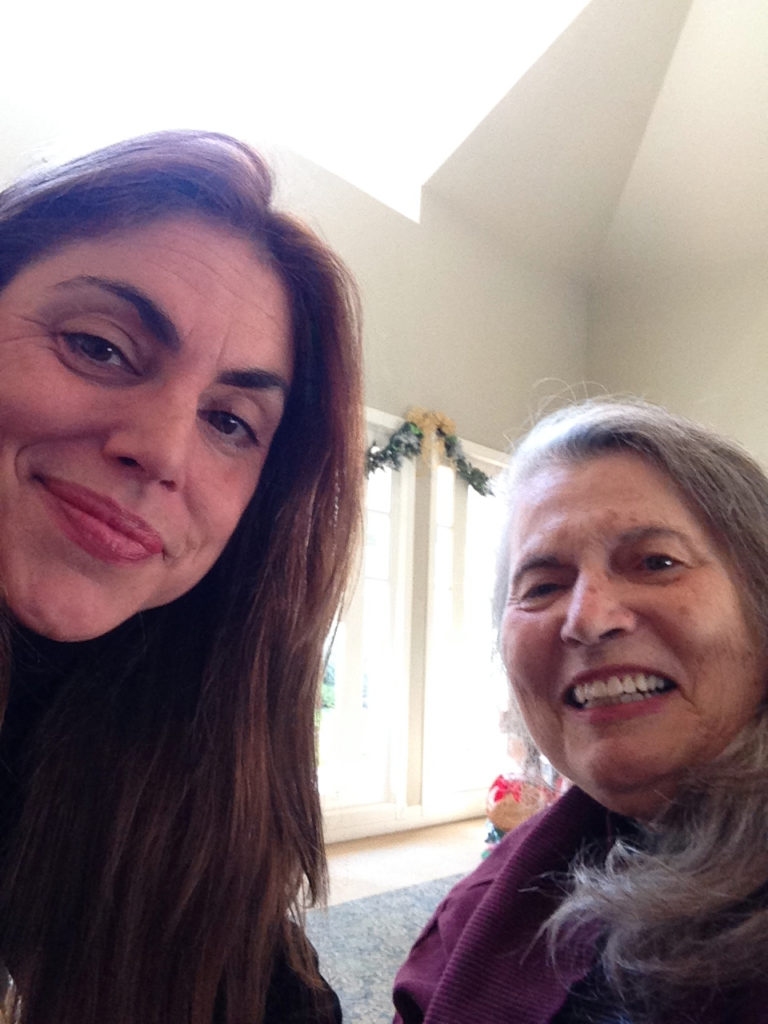

For
Two joint selfies that Lisa helped Leslie take of the two of them on her cell phone. For the photo on the left, Lisa held the camera and Leslie pushed the shutter button. For the photo on the right Leslie held the camera and pushed the button.
Once again, Lisa approached Leslie as if they were collaboratively managing the time they spent together. That characterized as well how Lisa and her mom watched television programs and movies, read magazines, and socialized with visitors and other residents.
What was remarkable to me in all of these was not just Leslie’s engagement and focus, but Lisa’s. In some sense, Lisa’s approach started with Leslie’s intentions and disposition at the time, and found ways to align her own interests more or less with those. Once aligned and assisted by Lisa, Leslie was in some sense more able to entertain and care for herself–albeit within Lisa’s presence and circle of attention. The increased agency this opened up for Leslie freed Lisa from trying to “get her mom to do something” and left her more available to simply “be there” and enjoy her company.
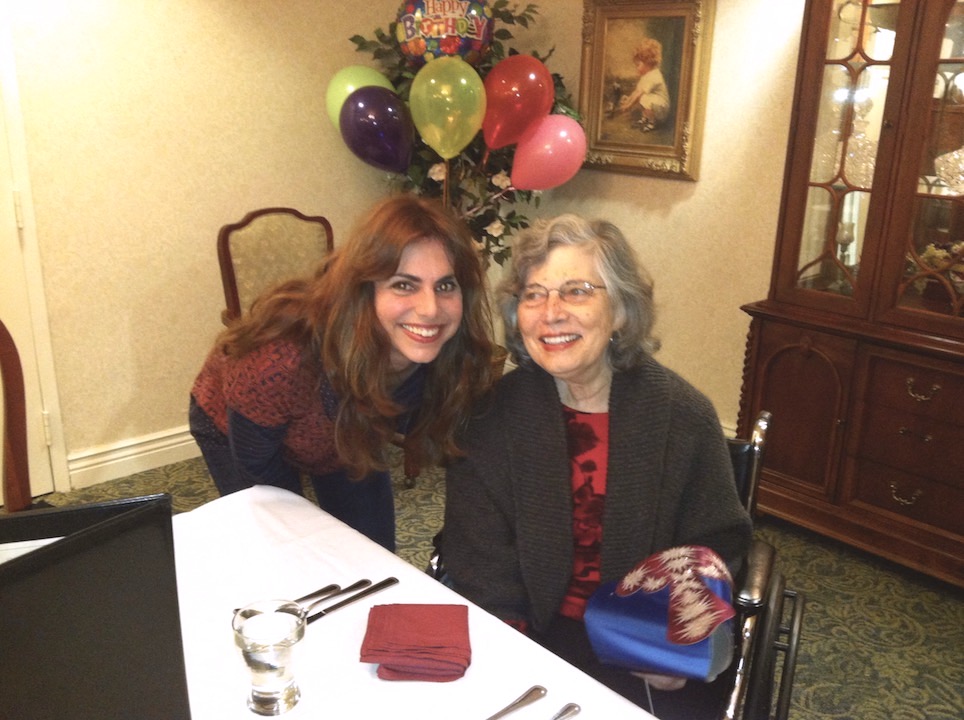
Lisa and Leslie at a birthday part that Lisa hosted for her mom at the end of her first year living in a memory care facility. Lisa did all the legwork for the party, but her mom participated as fully as she could, giving every indication of being fully engaged. Leslie’s expressive language and memory functions were significantly limited by this time, but she was still able and eager to listen attentively. Her gestures and facial expression suggested that she understood the situation and much of what was being said, and her gaze tracked perfectly through two hours of a very lively conversation among the other eight people present.
The outcome of their collaborative trial and error was that Lisa and Leslie spent a great deal of their time together doing things that they both enjoyed: reading magazines, watching movies, listening to music, socializing with care staff and other residents, or even hosting a dinner party. But an essential prelude to whatever “time together” the two of them brought to life was a period of reciprocal back and forth during which Lisa could “be there” for her mom without pushing her to do anything. Lisa understood this process fully and knew that few if any aspects of visiting with her mom could be programmed ahead of time. She might bring some props or materials to share with her mom, but she knew that whether or not that happened would depend on what happened after she got there, between her and her mom, together.
Visitors and care-givers who try to skip the exploratory back and forth necessary to assess and align their own interests with those of a memory care resident are likely to have a much tougher go of it. The equation here is not a zen koan, but it’s close: the path to doing something that’s mutually rewarding to a resident and and care-giver or visitor will take them first through some back and forth moments where they are together and doing nothing.

